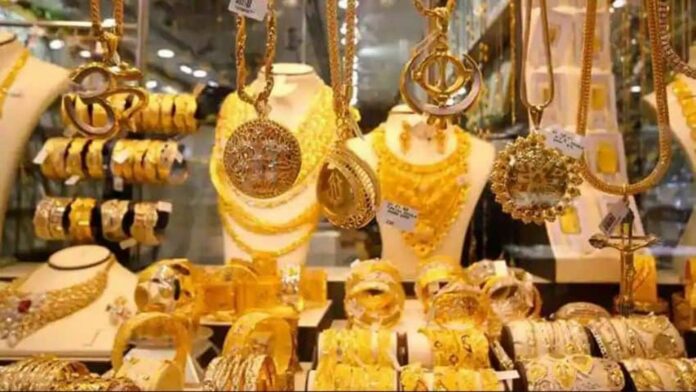Need for higher hedges by investors could turn positive for the precious metal By K Raveendran Geopolitics and guidance from the US Federal Reserve may not be the only factors that determine the performance of gold in the New Year. The Indian and other elections slated for the year may also be determinants. India is the second largest gold consumer in the world and the rate at which change is happening in the country is unprecedented and has a bearing on the performance of the precious metal globally.
The IMF forecasts that per capita GDP growth will increase 23 percent between 2022 and 2026. On the face of it, rising living standards benefit gold, but there are other factors in play: the country’s savings rate is declining, and the government’s ‘bank the unbanked’ initiative is creating a sea change in investment choice and availability. The Indian middle class expanded and household incomes have risen, with per capita net income rising from Rs 7,000 in the early 1990s to Rs 134,186 per year in financial year 2019-20.
This is expected to presage an almost four-fold increase in consumer spending, from US$1. 5 trillion in 2018 to US$5. 7 trillion by 2030.
Such a shift could have mixed implications for gold demand. Households in lower and mid-income groups have traditionally considered gold a better form of investment than bank deposit accounts. The role of gold as an inflation hedge is the biggest comforting factor for them.
More than any formal financial training, their actual experience and intuitive understanding of inflation has guided their investment planning for years. Here, gold has become their default option compared to other financial products, not surprisingly making gold their natural hedge against inflation and contingencies. A study had found that households with low net worth were more likely to take an informal loan than households with high net worth.
As a large amount of lending against gold happens in the informal sector, it further strengthens the fact that gold as an investment is preferred by low-income or rural households in India. Globally, there were two major risks for gold in 2023. First was the Silicon Valley Bank failure, which affected every investment product.
The other one was the Israeli-Hamas conflict, which rather added to the yellow metal’s safe haven value. According to the World Gold Council, national elections this year, including the US, EU and Taiwan, apart from India, could also mean need for higher hedges by investors, which should play out positively for gold. According to the council, despite some bumps along the way, the global economy proved remarkably resilient in 2023 and talks of an impending recession diminished as the year progressed.
Now, market consensus for 2024 points to a ‘soft landing’ given the expectation of positive growth ahead. Alongside the economic deceleration, market participants also expect inflation to cool sufficiently for central banks to begin cutting rates. Such a soft-landing scenario would be a welcome outcome for investors.
Gold’s performance responds to the interaction of its roles as a consumer good and as an investment asset. It draws not only from investment flows but also from fabrication and central bank demand. From a historical perspective, a soft-landing or a no-landing scenario could result in a flat to slightly weaker average gold performance next year, the council feels.
However, this time around there are two additional factor in gold’s favour: increased geopolitical risks and the increasing demand by central banks for gold. Purchases by official institutions have helped gold defy expectations over the past two years. In 2023 excess central bank demand is estimated to have added 10 percent or more to gold’s performance.
And they will likely continue buying. Even if 2024 does not reach the same highs as the previous two years, the council anticipates that any above-trend buying should provide an extra boost. If the no-landing scenario does occur, it could prove initially challenging for gold.
While positive economic growth would support consumer demand and higher inflation would increase the need for hedges, it is likely that the combination of higher rates and a stronger US dollar would create a drag, as they did in September 2023. But if inflation surges again, it could elicit an even stronger monetary response, leading the world back to the spectre of a harder landing further down the line and a strong case for strategic gold allocations. (IPA Service).
From: thenorthlines
URL: https://thenorthlines.com/implications-of-national-elections-for-gold-demand-in-india-and-world-markets/



